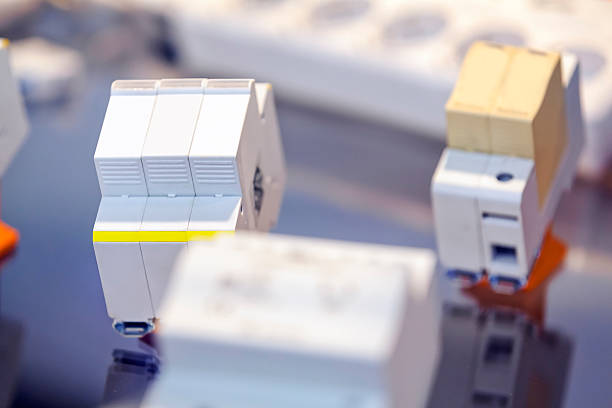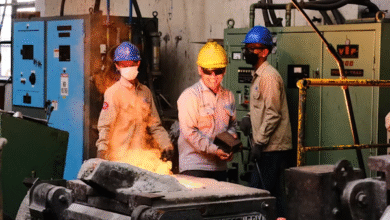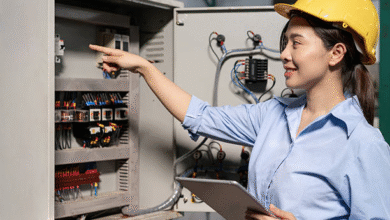Surge Protection for Off-Grid Electric Systems: Ensuring Energy Independence and Safety

Off grid electric applications are fast becoming the trendy use of sustainable power source in place of grid tied power source. These systems are an energy-independent and resilient option regardless of whether they were deployed in remote cabins, countryside, or mobile installations such as RVs or boats. Surge protection is however one of the aspects of an efficient and safe off-grid energy solution that is of late not so much taken into account. Lightning, faulty wiring, or rapid load modifications are just some of the causes of electrical grades that can potentially break costly devices including inverters, batteries, charge controllers and attached devices. It is imperative to establish good surge protection and LSP has emerged as a market leader on this front by providing state-of-the-art surge protection systems on off-grid systems. The article addresses the issue of surge protection to off-grid performance, reliability and their safety.
Why Surge Protection Matters in Off-Grid Systems
The off-grids are distinct in their isolation to the utility grid that exposes them to be attacked in various forms. Although they do not suffer utility faults, they tend to be more vulnerable to local disturbances, particularly lightning and switching internal surges. At the very centre of an off-grid set-up are the solar panels, battery banks, inverters, and controllers which are interconnected and very sensitive to spikes in voltages. Inadequately guarded, one surge may propagate through the system and render irreparable damages and even halt the complete power pole.
In such a case, surge protection is crucial in the absorption and redirection of extra voltage that can cause damage to the crucial parts. Surge protective devices (SPDs) are like a shield and they provide protection against equipment and give it an extended usage life. Major producers such as LSP specializing in goods such as SPDs tailor them in renewable and off-grid applications and provide stable performance even in harsh conditions. The system will be resilient and efficient in a case where it faces a surge due to either atmospheric conditions or due to faults in the system because of proper surge protection.
Important Aspects that can Fail During the Surge in Off-Grid Systems
The electrical surges are particularly likely to cause significant damage to several key components in an off-grid system. One of the most important ones are inverters that change the DC electricity supplied by batteries or solar panels to usable electricity and which contain sensitive electronic circuitry that is easily damaged by voltages surges especially upon Usage failure. Batteries, batteries, particularly lithium-ion types have an issue, too The surge can shorten the life cycle of the battery or lead to safety concerns due to overheat or leakage.
Charge controllers, the use of which controls the flow of current from one source (solar panels) to another (batteries) are regularly the initial port of imminent contact with exterior bursts. Lightning to a tree or metal object near the connected PV system may cause a surge in the connected PV system directing thousands of volts to circulate through the charge controller in milliseconds. It is necessary to add surge protection at this stage.
LSP has the speciality in SPDs designed to address each of these weak points. Providing dedicated devices to cover DC inputs, AC outputs, and signal lines, LSP will allow off-grid consumers to develop a complete approach to surge protection, protecting all of the connections in their energy pipeline.
Integrating Surge Protection in Solar-Based Off-Grid Systems
The most widespread type of power in the off-grid case is solar. Photovoltaic (PV) arrays mounted on open, raised areas are especially vulnerable to lightning-caused surges, though. These surges may gain access into the system through the panel wiring and will run through the whole electrical path across the system. This alone may make the system inoperable and costly to fix or replace when defense is not taken.
The best time to integrate the SPDs in solar based off-grid systems is at the design and installation phase. The surge protectors then must be placed at several points i.e. between the PV array and the charge controller, between the charge controller and the battery bank, and the input and output terminals of the inverter. Operating with SPDs that are compliant with international safety standards such as the IEC 61643 guarantees flawless operation.
LSP supplies surge protection devices specifically related to solar applications, a source of both Type 1, Type 2 and combined Type 1+2 protection. This equipment makes it possible to neutralize both direct and indirect surges. Also, the LSP products are designed in a compact size, corrosion resistant and fit both 12V and 48V applications which makes them suitable in diverse off-grid applications.
Surge Protection Solutions of EV Chargers and Off-Grid Solutions
With the rise in adoption of electric vehicles, it is becoming common to have off-grid systems that will power residential or distant electric vehicle charging stations. Although these configurations are novel and sustainable, they introduce other challenges of surge protection. EV chargers are also high current as well as sensitive to electronic equipment which must be within protection against transient over-voltage.
One should appreciate the fact that EV charger surge protection and off-grid system reliability are two sides of the one coin. Insufficient SPDs would entail that a voltage surge can damage the EV charger and even the whole off-grid system. The presence of a special surge protection circuit that covers the charge circuit will guarantee stable charging results, increase the longevity of the charger and improve safety of the user.
Firms such as LSP are offering combined products that cater to both AC surge protection and DC surge protection of the EV chargers. These products can be integrated successfully (easily) into new or pre-existing off-grid systems, so the expanding interest in sustainable EV charging will not undermine electrical safety.
Long-Term Benefits of Surge Protection for Off-Grid Energy Systems
Surge protection is an investment that off-grid energy users will get great benefits due to long-term success. On the one hand, it lowers greatly the possibility of the equipment breaking down and being replaced by a new one. The good components like inverters and lithium batteries are costly, and an adequately installed SPD is a good insurance against early failure.
Secondly, surplus protection reduces downtime. It is not always easy or quick to repair or replace the components in remote locations or off-grid locations. Users will have peace of mind and continuous power since failure due to surges is avoided. This is particularly of concern to off the grid systems that are deployed in highly demanding applications like medical stations and communication towers or remote research stations.
Lastly, adequate surge protection also happens in line with the interests of energy conservatism. Surges are usually accompanied by the damage which is not in sight and which impairs the components performance as time goes by. By preserving the integrity of the system SPDs allow ensuring the best energy conversion and storage efficiency.
Not only does LSP product line compose that satisfies the technical performance standards but it also aims at longevity, durability and integration ease. They are also a leading option in the surge protection of energy-independent settings due to their dedication to ensuring the reliability of their scalable services.



